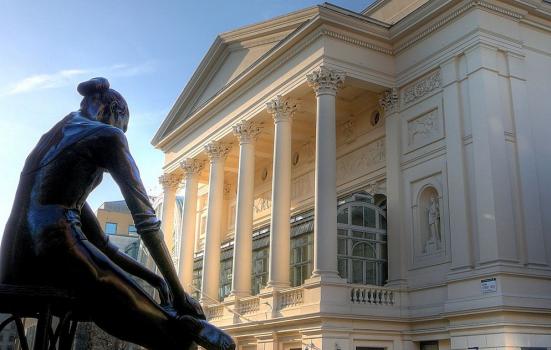Over half of the £15m direct Government support for the arts went to London-based organisations last year.

Russ London at English Wikipedia (CC BY-SA 3.0)
Revenue grants worth over £15m were paid direct from the Treasury to some of England’s largest arts organisations last year, with over half going to London-based organisations.
£3m was shared by Arts Council England’s (ACE) four highest funded National Portfolio Organisations (NPOs): The Royal Shakespeare Company took the largest share with £1.8m for its first major tour of China; the Royal Opera House and Southbank Centre each received £500k for a China/UK performing arts training programme and a Chinese arts festival respectively; and the Royal National Theatre received £250k for its co-production of War Horse with China’s National Theatre.
The Barbican received the highest direct award from the Treasury, with £5.5m to develop a full business case for a new Centre for Music, and Manchester scooped the highest award outside London, with £3.5m for The Factory.
Government direct revenue funding to arts organisations 2015/16:
| Barbican Centre | £5,500,000 |
| Battersea arts centre | £500,000 |
| Manchester City Council | £3,500,000 |
| Pendle Borough Council | £56,000 |
| Royal National Theatre | £250,000 |
| Royal Opera House | £500,000 |
| Royal Shakespeare Company | £1,800,000 |
| Shakespeare’s Globe | £740,000 |
| Southbank Centre Limited | £500,000 |
| The Captain Cook Birthplace Museum | £500,000 |
| Tyne & Wear Archives & Museums | £500,000 |
| Welcome to Yorkshire | £1,000,000 |
| Writers’ Centre Norwich | £50,000 |
England’s arts funding operates under the arm’s length principle, with Government funding for the arts distributed via the DCMS through ACE. It is an approach designed to protect the arts from direct political influence and interference. In 2010 Culture Minister Ed Vaizey told The Guardian: “My conception of the arm’s length principle is that it exists for deciding which bodies are funded.”
But these grants – and the £70m of direct government funding pledged to arts capital projects by the Chancellor in the most recent budget statement – indicate that direct Treasury funding has a new place in the arts funding landscape and intervention in decision-making is on the rise.
Concerns about the processes for allocating ad hoc Treasury grants were raised in the wake of the collapse of Kids Company and the Cabinet Office has pledged to introduce a “new, more rigorous and probing approval process as well as greater transparency”.
In Scotland, following a disagreement over former First Minister Alex Salmond’s plan to grant £1m to Scottish Youth Theatre, Creative Scotland Deputy Chief Executive Iain Munro wrote to the Government warning that the direct funding would undermine “the entire Regular Funding process and Creative Scotland’s status as an arm’s length [non-departmental public body]”. Government officials subsequently lost their automatic entitlement to attend Creative Scotland board meetings.
AP asked ACE what role direct Government funding of the arts has in its plans for the future. A spokesperson replied: “We welcome additional funding from government for projects they wish to support. Where appropriate we act as fund holder for that money.”




